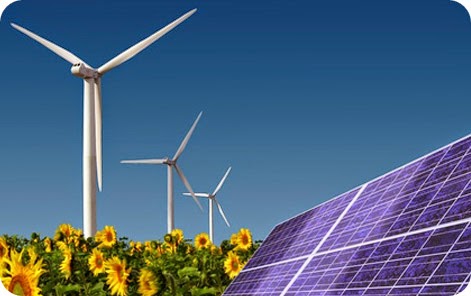Hawai’i state law requires utilities to increase their use of renewable energy.
It is easy to understand the Renewable Portfolio Standards (RPS) law.
“Each electric utility company that sells electricity for consumption in the State shall establish a renewable portfolio standard of …Fifteen per cent of its net electricity sales by December 31, 2015 …Forty per cent of its net electricity sales by December 31, 2030.” (HRS 269-92)
The complexity of RPS is defining what actually can be counted as renewable energy.
The issue is not simple.
There are hundreds of different definitions across the country that makes comparisons much more difficult.
Pennsylvania mines coal. Captured coal gas is renewable if burned on-site and fossil fuel if burned off-site.
Renewable Energy is not a scientific term, it is a political term.
Renewable Energy is a man-made definition.
As such it is subject to political will and is heavily influenced by the enormous weight of the fossil fuel and utility industries.
Renewable Energy does not and cannot have a scientific basis.
The universe is made up of energy and matter which are different forms of the same thing. Energy cannot be created nor destroyed. It can only change forms.
The 18th century French Scientist Lavoisier wrote, "Nothing is lost, nothing is created, everything is transformed." Mass cannot be created. Mass cannot be destroyed. Mass can only be transformed.
Albert Einstein came up with the theory e=mc2. Mass is Energy. Energy is Mass.
Energy cannot be created nor destroyed. Hence renewable energy is a scientific contradiction.
Many people believe that if Hawaii increases its use of renewable energy that one or more of the following will occur: decreases in prices, decreases in imports, less pollution, stronger local economy, less greenhouse gases, safer energy supply, less vulnerability, less volatility, greater sustainability and/or increased energy independence.
None of those factors are included or implied in any definition that Hawaii has ever used for renewable energy.
Since the start of the year 2000 Hawaii has had multiple definitions of what renewable energy means.
The definitions have been changed in five different Legislative Sessions: 2001 (HB 173 CD1, Act 272), 2004 (SB 2474 HD2, Act 95), 2006 (SB 3185 CD1, Act 162), 2009 (HB 1464 CD1, Act 155) and 2011 (SB 1346 SD2, Act 10).
Are biofuels renewable energy?
The 2001 law said yes, if “derived entirely from organic sources.”
The 2004 law said that biofuels made from a combination of fossil fuels and renewable energy is partially renewable depending upon the proportion of renewable energy input.
The 2006 law said biofuels are always renewable, even if they are made entirely from fossil fuels.
Thus today biofuels are renewable energy if they are made by chopping down tropical rainforests, if they displace native peoples, if they cost an arm and a leg and if they have life cycle greenhouse gas emission levels that make coal look marvelous.
Some biofuel companies such as Pacific Biodiesel are very conscious about sustainability. Others are not.
Is hydrogen renewable energy?
The 2001 law said yes, if “derived entirely from organic sources.”
The 2004 law said that hydrogen made from a combination of fossil fuels and renewable energy is partially renewable.
The 2006 law said hydrogen is renewable if it is “produced from renewable energy sources.”
Today coal can be used to make renewable biodiesel which can then be converted into renewable hydrogen.
Is energy efficiency renewable energy?
The 2001 law said yes, if it is associated with “the use of solar and heat pump water heating.”
The 2004 law said savings from seawater air conditioning is renewable energy.
Ice can be made at night from fossil fuels and then melted during the day to offset electricity. That would increase the total electricity used, which might all come from fossil fuel, but the “savings” would count as renewable energy.
If heat from fossil fuel power plants is captured and used it might count as renewable energy. It would count as renewable energy if the heat came from certain power plants but not from other power plants. The law was not clear which plants would be included and excluded.
The biggest problem with the 2004 law was that “quantifiable energy conservation measures” was defined to be renewable where neither “quantifiable energy conservation measures” nor “energy conservation measures” has ever been defined. There is no common sense understanding of what is meant by the term.
The 2006 law counted savings from all energy efficiency technologies as renewable energy.
The 2009 law established a separate Energy Efficiency Portfolio Standard (EEPS). In 2015 energy efficiency would cease to be counted as renewable energy.
The law also specified that “customer-sited, grid-connected renewable-energy systems” would no longer count as an energy efficiency technology.
The 2011 law clarified that “customer-sited, grid-connected renewable-energy systems” are renewable energy and count towards the RPS requirements.
Constitutional Mandate
In 1978 the State Constitution was amended. An energy self-sufficiency clause was included.
In 1979 the Legislative Reference Bureau stated that this clause does not need implementation language by the State Legislature.
For the first twenty five years after it was enacted, the percentage of electricity generated from renewable energy went slightly downward. Then manipulations to the definition of renewable energy allowed the percentage to trend upwards.
In the last few years the renewable energy numbers have risen due to the installation of several industrial-scale wind farms and 40,000 rooftop solar systems.


Post a Comment
Post a Comment